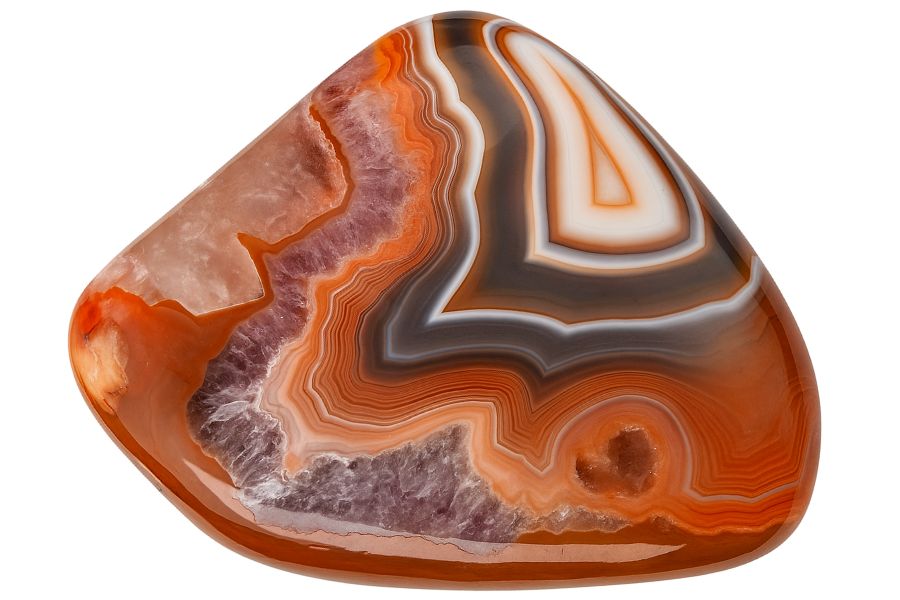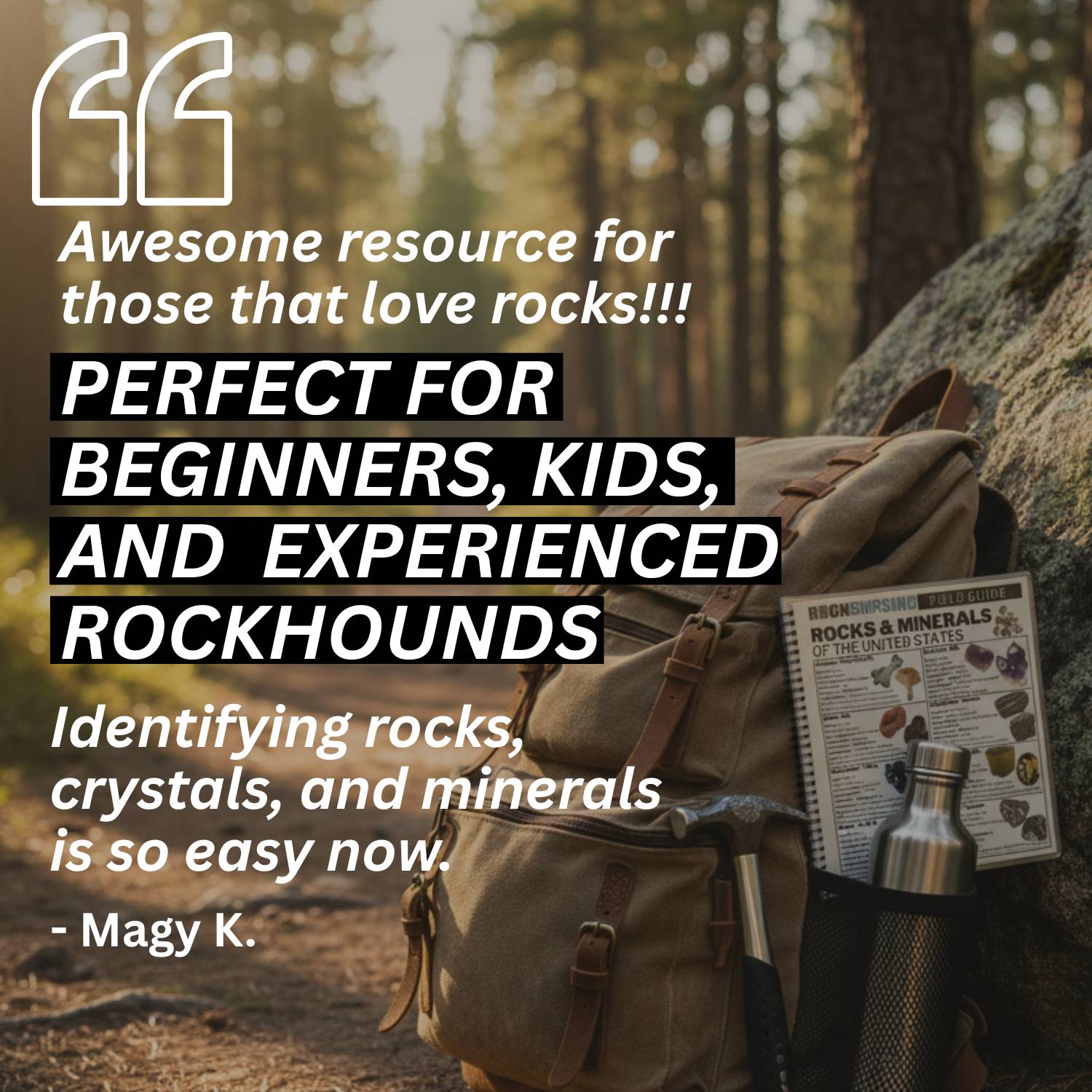Kansas has more agates than many people realize, and they can be found in several different parts of the state. If you know the kinds of areas to focus on, you stand a much better chance of noticing them.
Some of the most reliable spots are where water or human activity has stirred up and uncovered new material. Gravel beds, cut banks, and worked ground are all worth checking if you take your time and look closely.
Agates can blend in with ordinary rocks, but the right conditions make them easier to spot.
Our guide can point you to the parts of Kansas where agates are most often found. With a little direction, you can spend less time guessing and more time adding stones to your collection.
What is Kansas Agate?
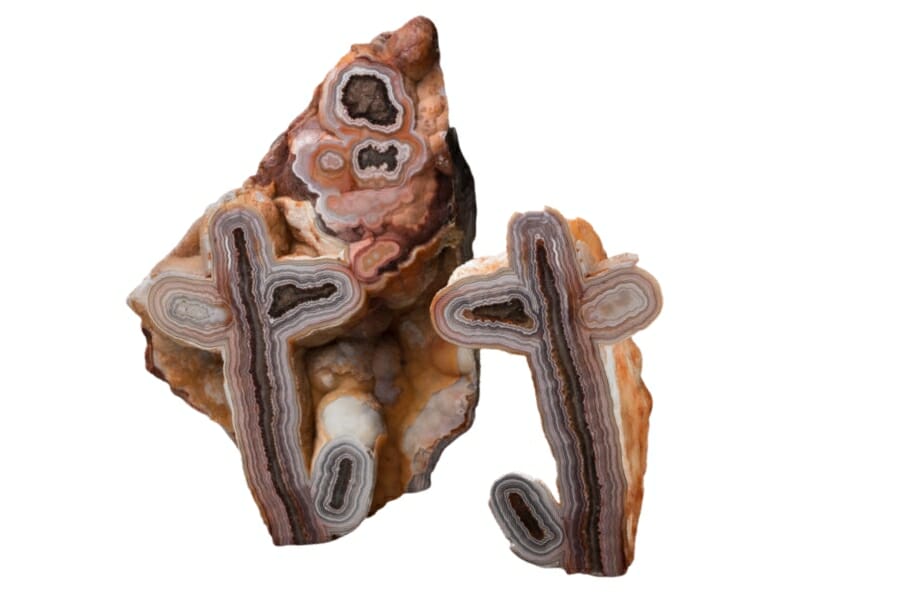
Agate is distinguished by its fine grain and often displays various colors in layers or bands, from transparent to opaque.
It shows how fantastic nature is with its intricate patterns, swirls of color, and mesmerizing transparency. Their formation has taken millions of years, and each stone is a unique and beautiful work of art.
Even though agates can be found worldwide, they are most often found in places with a lot of volcanic activity or where volcanic fluids have changed the rocks.
Check out our article to know the current price and value of agates.
Blue Lace Agate
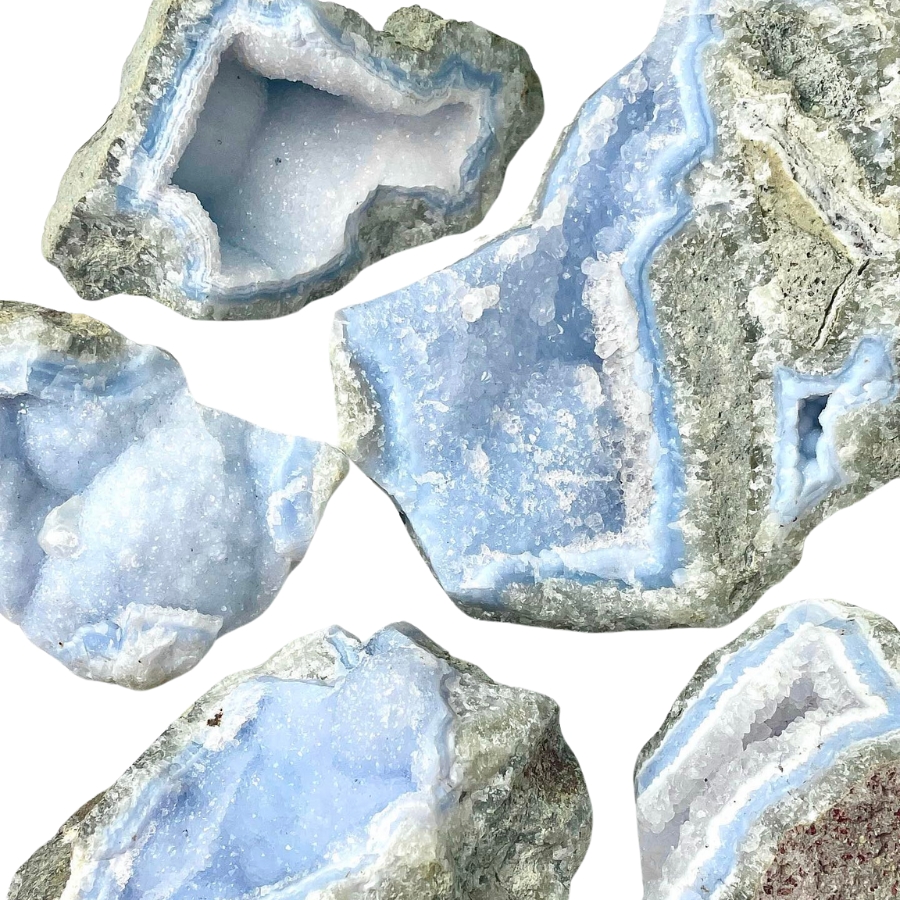
Blue lace agate is like the soft, sky-blue waves with lines that swirl and twist like delicate lace.
Its pattern comes from slow-forming layers of quartz, which create those beautiful, lace-like bands.
The bands of this agate type are often in shades of light blue, white, and sometimes a bit of grey. It’s different from other agates, which usually have more intense colors and stronger patterns.
The value of blue lace agate lies in its soft, tranquil look and the feeling of calm it brings. It’s often used in jewelry or as a decorative stone.
If you want REAL results finding incredible rocks and minerals you need one of these 👇👇👇
Finding the coolest rocks in isn’t luck, it's knowing what to look for. Thousands of your fellow rock hunters are already carrying Rock Chasing field guides. Maybe it's time you joined the community.
Lightweight, mud-proof, and packed with clear photos, it’s become the go-to tool for anyone interested discovering what’s hidden under our red dirt and what they've already found.
Join them, and make your next rockhounding trip actually pay off.
What makes it different:
- 📍 Find and identify 140 incredible crystals, rocks, gemstones, minerals, and geodes across the USA
- 🚙 Field-tested across America's rivers, ranchlands, mountains, and roadcuts
- 📘 Heavy duty laminated pages resist dust, sweat, and water
- 🧠 Zero fluff — just clear visuals and straight-to-the-point info
- ⭐ Rated 4.8★ by real collectors who actually use it in the field
Moss Agate
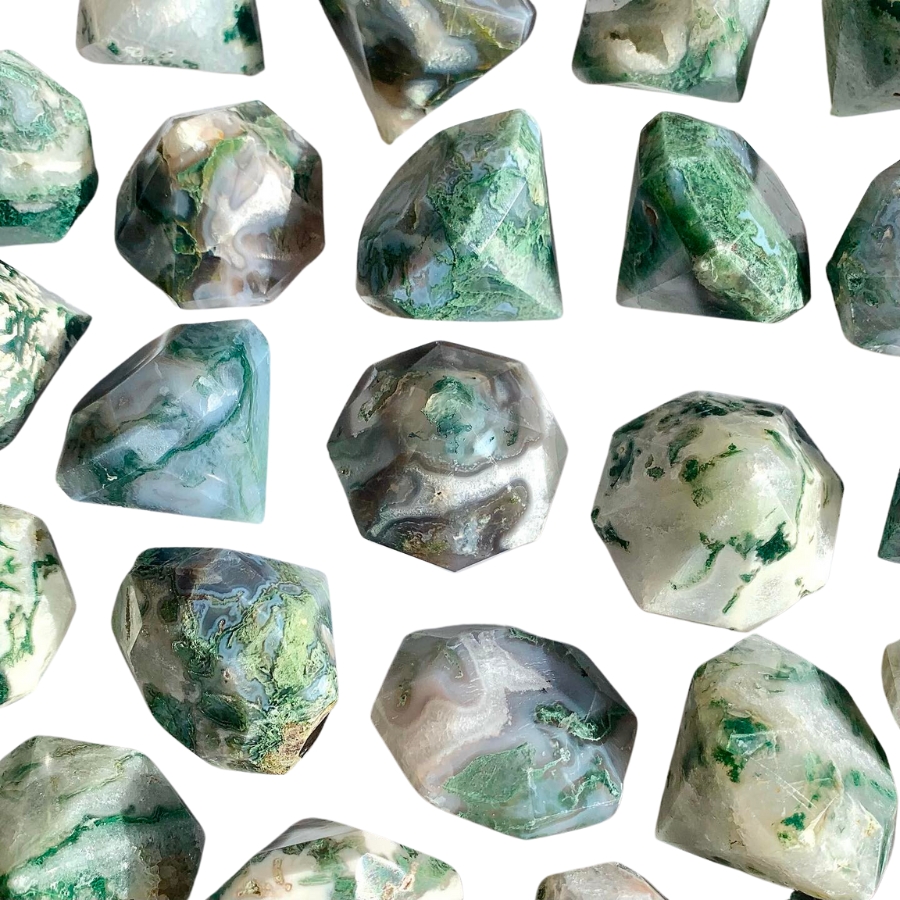
Instead of having the typical banding for which the different types of agates are known, moss agate has green inclusions that look like moss or trees.
These green patterns aren’t real plant material, though. They’re minerals like chlorite or iron oxide.
In some cultures, this type of agate is known as the “gardener’s stone” because of its green, plant-like appearance. It’s believed to help plants grow.
The price of moss agate can vary. It’s often quite affordable, but the more distinct and picturesque the green patterns, the more it might cost.
Fire Agate
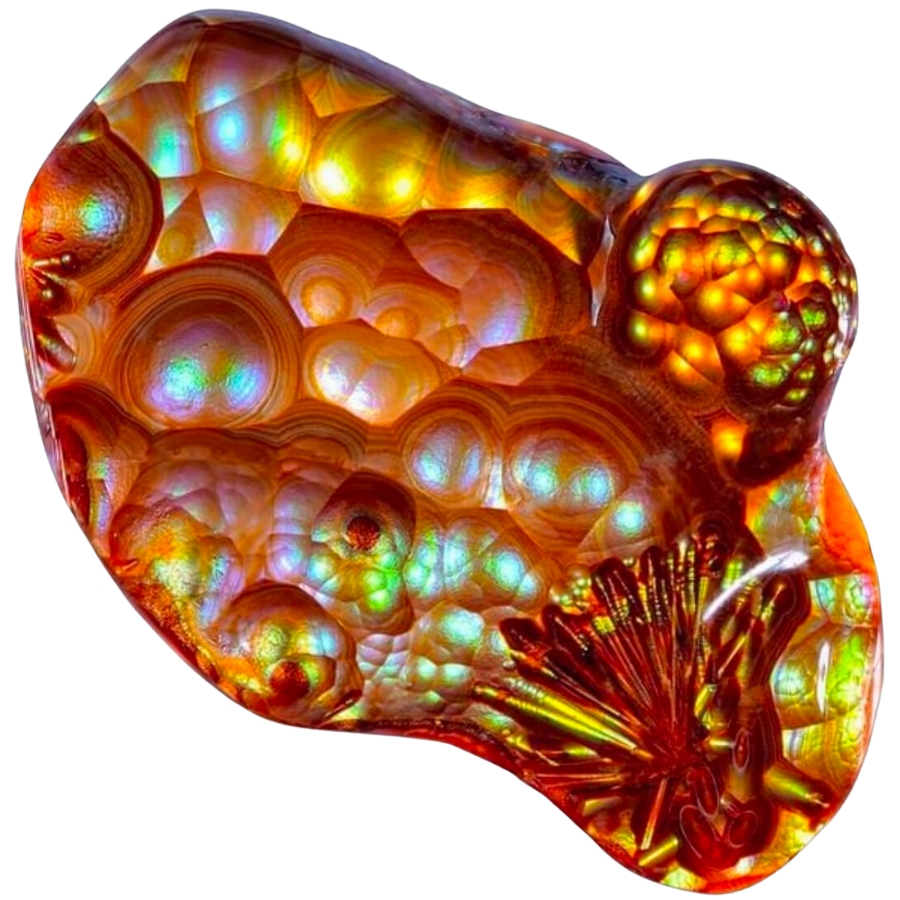
Fire agate is known for its incredible colors and the way it sparkles like fire. It’s got layers of silica and iron oxide that reflect light, creating a fiery effect.
When you look at fire agate, it’s like seeing flames trapped inside. Its colors can range from reds and oranges to greens and golds, all shimmering under the surface.
You might be wondering, “What is fire agate worth?” Well, its value comes from its rare beauty. The more color and sparkle, the more valuable the stone is.
Its fiery iridescence and lively play of color are used in jewelry pieces that are meant to stand out.
Dendritic Agate
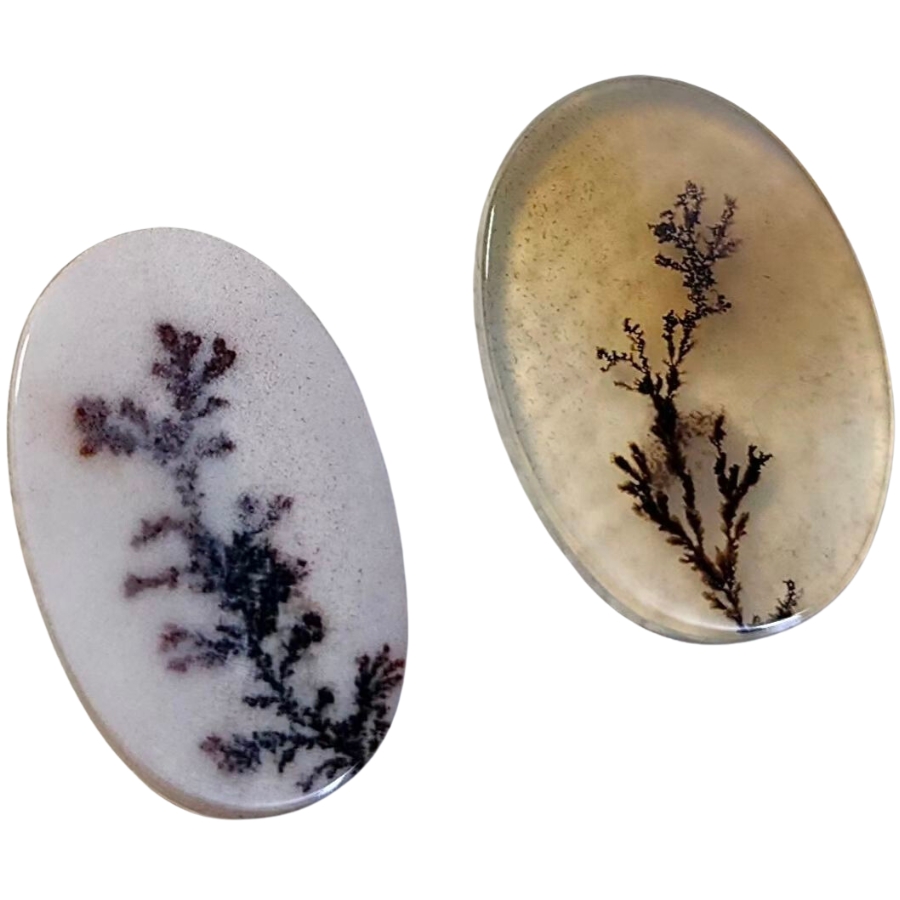
Dendritic agate is known for patterns that look like tiny trees or shrubs. Like moss agate, these patterns aren’t actual plants. They’re made of minerals, mostly manganese or iron oxides.
When you look at a dendritic agate, it’s like peering into a miniature forest or a frosty winter landscape.
The base of the stone is usually translucent to opaque, and the “dendrites”— those tree-like patterns— are often black or brown.
When it comes to how much dendritic agate is worth, it can vary. The more detailed and distinct the patterns are, the more it’s usually valued.
In some cultures, dendritic agate is believed to bring fullness and richness to life.
Crazy Lace Agate
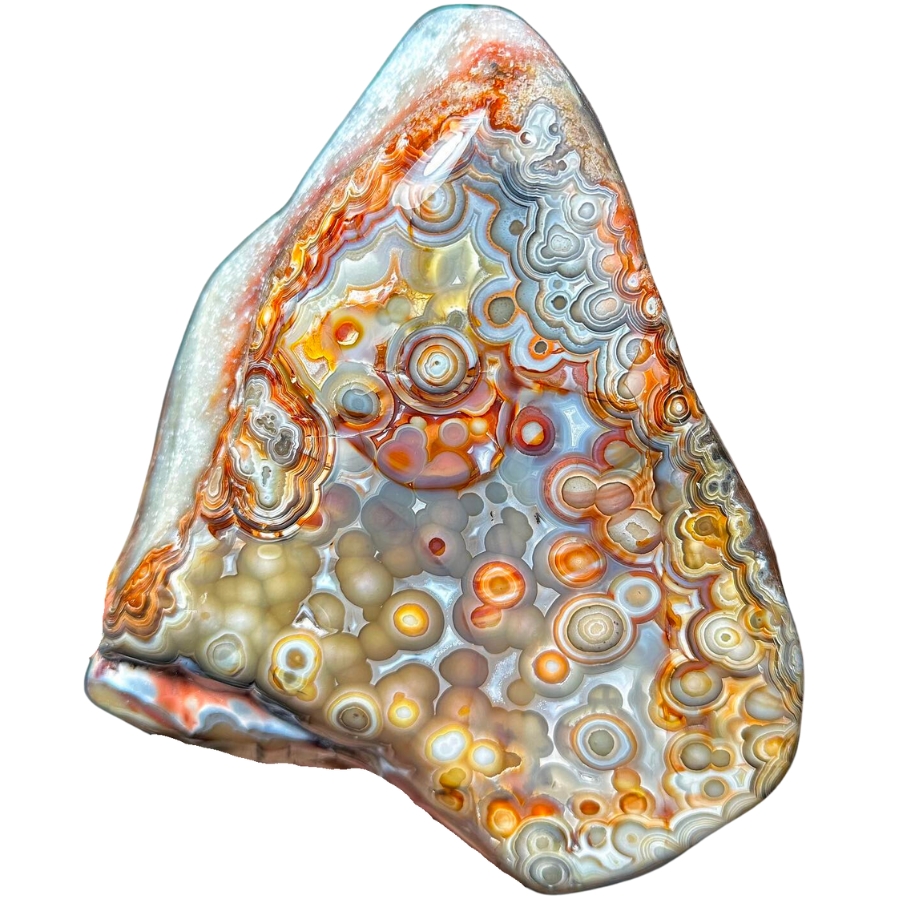
Crazy lace agate is like a party in a rock! It’s got swirls, circles, and all sorts of wild patterns dancing across it.
Its colors can be a mix of red, orange, yellow, and brown, and sometimes even a bit of gray or white.
What makes crazy lace agate stand out is its vibrant and complex patterns. No two pieces are the same. This distinctiveness is a big reason why it’s so valued.
Despite its wild and ‘crazy’ appearance, it’s sometimes called the “Laughter Stone” or “Happy Lace” because of the joy and positive vibes it’s believed to bring.
Laguna Agate

Laguna agate has incredibly sharp and fine banding. It has layers of red, orange, pink, yellow, and sometimes even purple and white all stacked in neat, tight bands.
These bands can form eye-catching patterns, like swirls, loops, and even landscapes.
The different colors of its bands come from various minerals present in the water at the time of its formation.
Laguna agate is considered one of the finest agates in the world due to its exceptional banding. This high regard among agate varieties makes it a prized possession for collectors.
Condor Agate

Condor agate is a real standout. It’s known for its bright, vivid colors and complex patterns.
It has reds, oranges, yellows, and sometimes even blues and greens all swirling together. These colors form in bands or in more random, artistic patterns.
The intensity and variety of its colors is what makes condor agate so special. It’s often used by artists and craftsmen who want to make a statement with their work.
Condor agate’s bold colors and patterns can turn a simple piece of jewelry or art into something really eye-catching.
Fortification Agate (Banded Agate)
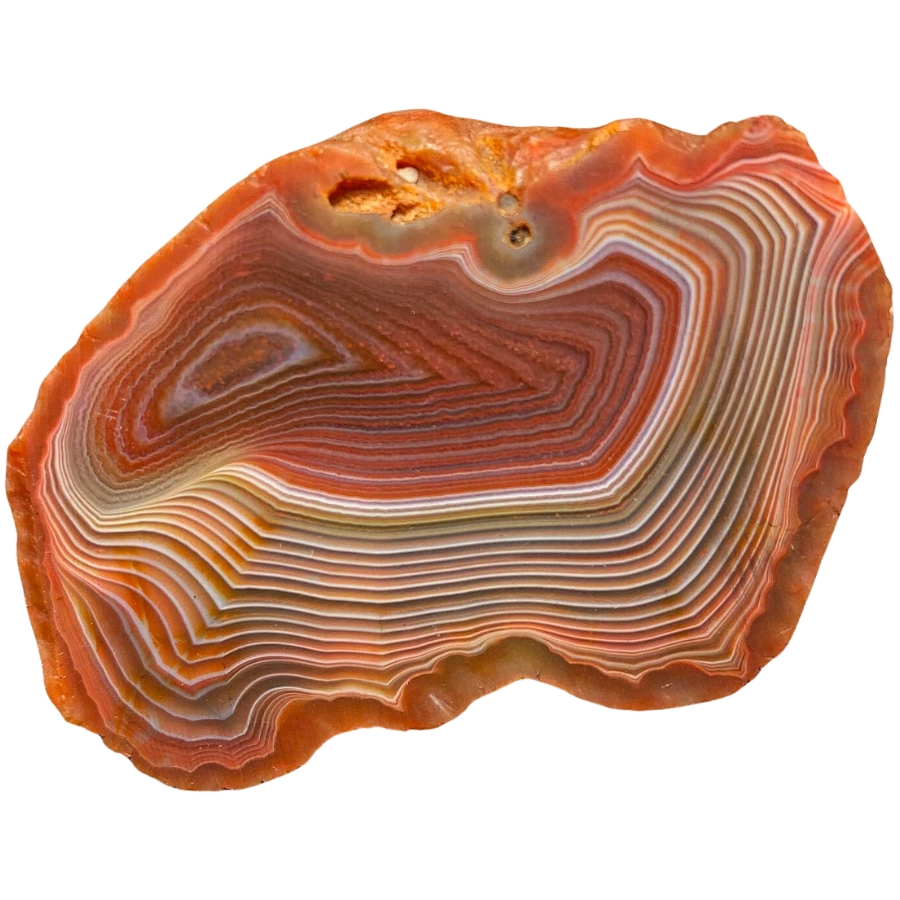
Fortification agate gets its name because the patterns inside it look like the aerial view of a fortified city.
Imagine seeing bands of color forming shapes that look like walls, with sharp angles and curves. They are usually in different colors, making each layer stand out.
If fortification agate is valuable, it’s because of its distinct patterns and colors. Its unique look makes it sought after for jewelry and as a collector’s item.
The clearer and more defined the patterns, the more valuable the stone can be. Some people also believe it can help with relaxation and calmness.
Iris Agate
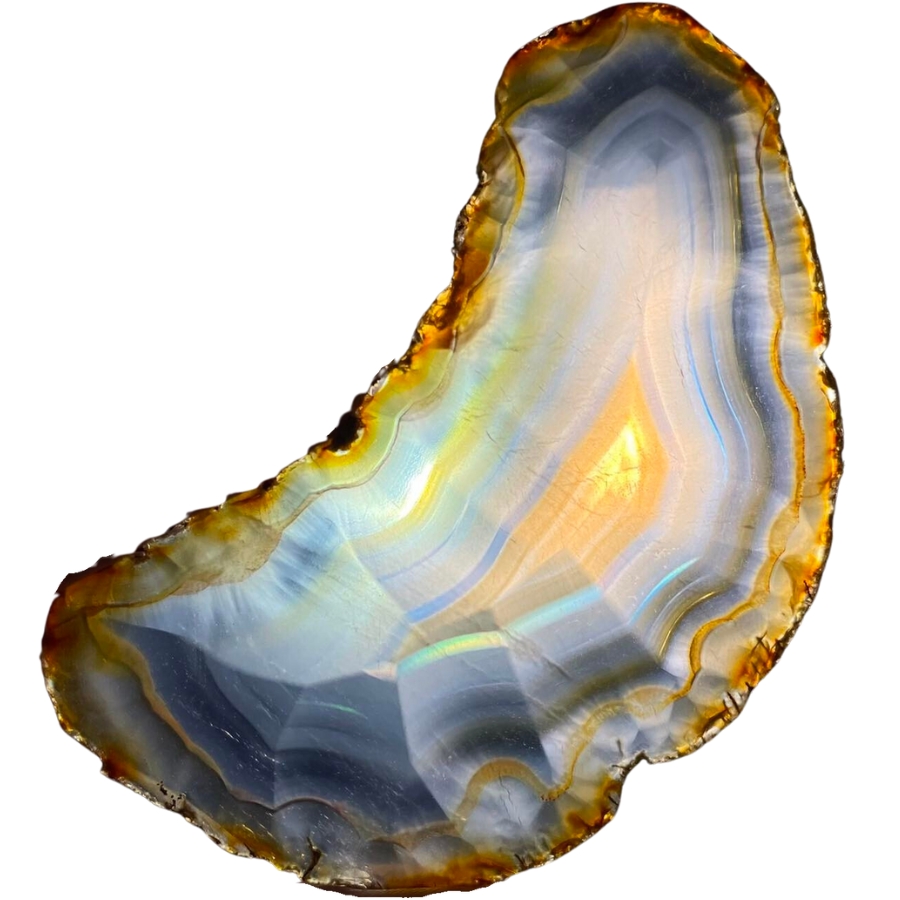
Iris agate looks like a regular agate at first, but when you hold it up to the light, something amazing happens. It shows all these rainbow colors, like light passing through a prism.
This is because it has very thin layers of silica, and when light hits these layers, it splits into all the colors of the rainbow.
The formation of iris agate is similar to other agates, but its layers are super thin, which is what creates the rainbow effect.
The value of iris agate comes from its unique ability to show these colors. In the past, people even used to think it had magical properties because of the way it showed colors. They saw it as a stone of good luck and wonder.
Plume Agate
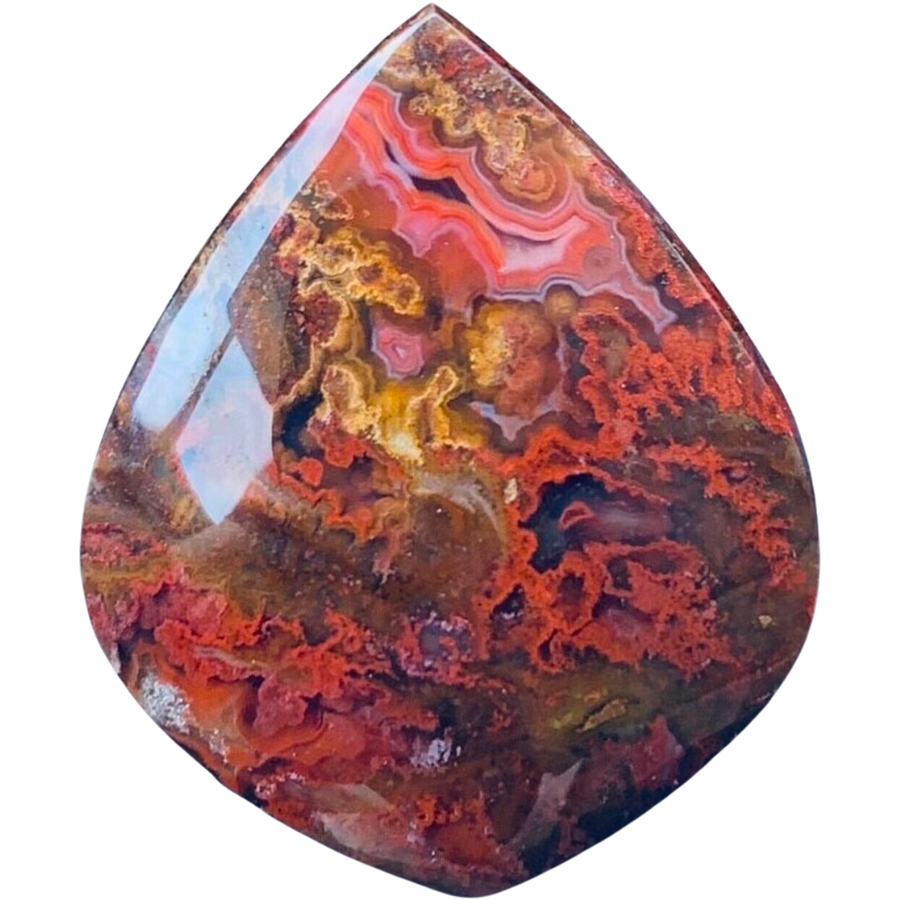
Plume agate gets its name from its patterns that look like soft, feathery plumes. These plumes can be in all sorts of colors: red, black, green, or yellow, set against a translucent or opaque background.
The way these plumes seem to float in the stone makes it look like a frozen underwater scene or like feathers caught in a breeze.
The plumes are made of minerals like manganese or iron oxide, which get trapped in the silica during the agate’s formation and create the feathery patterns.
The price of plume agate can vary depending on how clear and intricate the patterns are. The more detailed and colorful the plumes, the more the stone is usually worth.
Picture Agate (Scenic Agate)
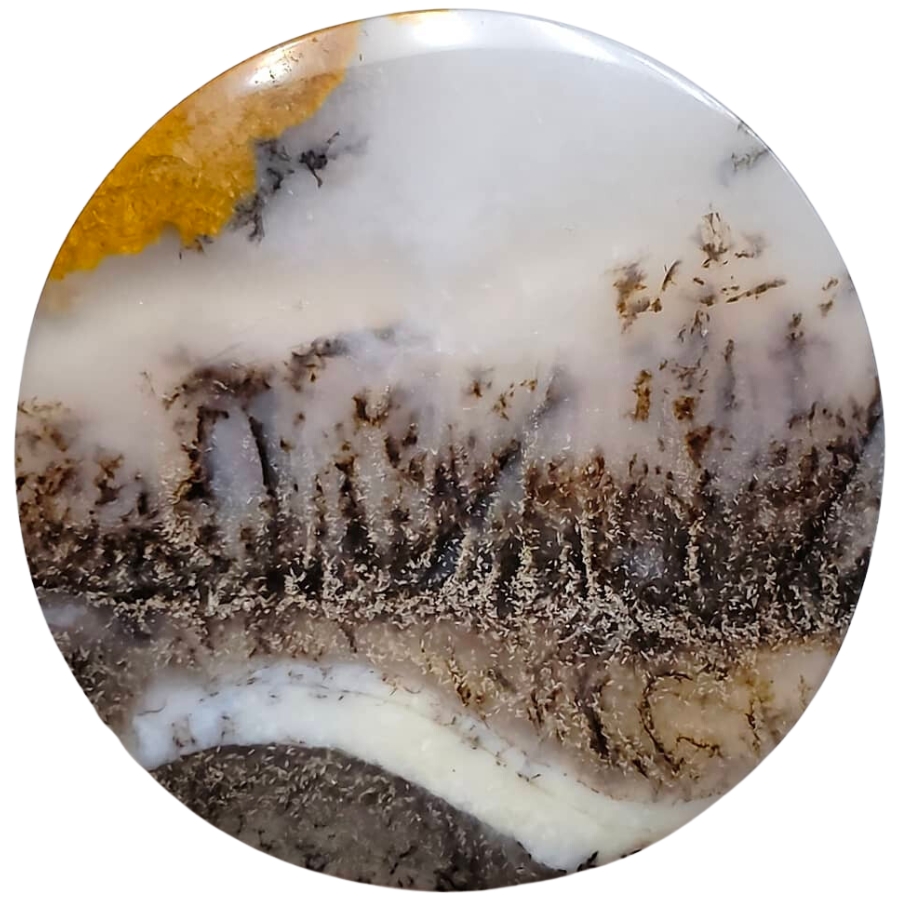
Picture agate is like a snapshot of nature captured in stone because it looks like it has pictures or scenes right inside it.
These “pictures” are actually natural patterns that resemble landscapes, mountains, trees, or even skies. They are usually in different shades of brown, white, and gray against a more translucent background.
The different patterns in picture agate or what’s also called scenic agate are made by various minerals in the water filled with silica that forms it.
If you’re thinking, “What is picture agate worth?“, its value comes from how distinct, clear, and detailed the natural “pictures” are.
Turritella Agate
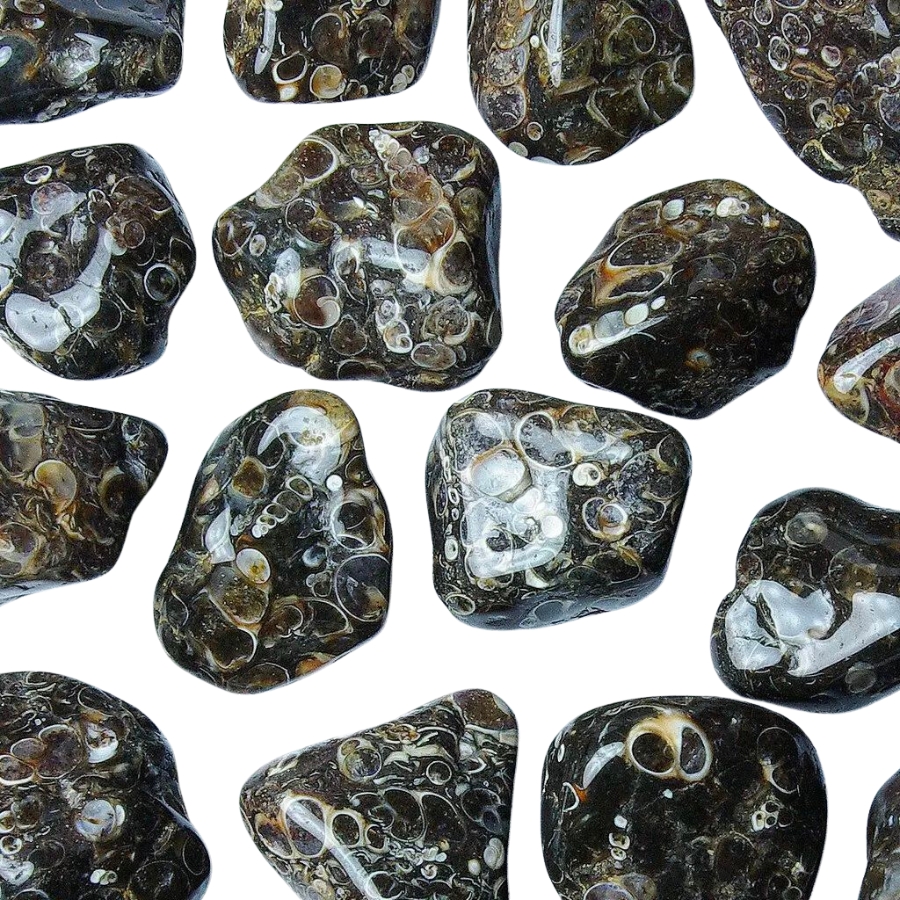
Turritella agate is not your typical agate because it’s full of fossilized snail shells! The shells belong to a creature called Turritella, a type of sea snail.
These shells are tightly packed and create a pattern that looks like a bunch of tiny, swirling towers. The background of the agate is usually a dark, earthy color, which makes the white or cream-colored snail shells really pop.
Over millions of years, these snail shells got buried in sediment and eventually became fossilized. As time went on, silica-rich water flowed through the sediment, turning it into the agate we see today.
The value of turritella agate comes from its unique blend of geology and history. More than a pretty stone, it’s a piece of ancient life preserved in rock.
Fairburn Agate
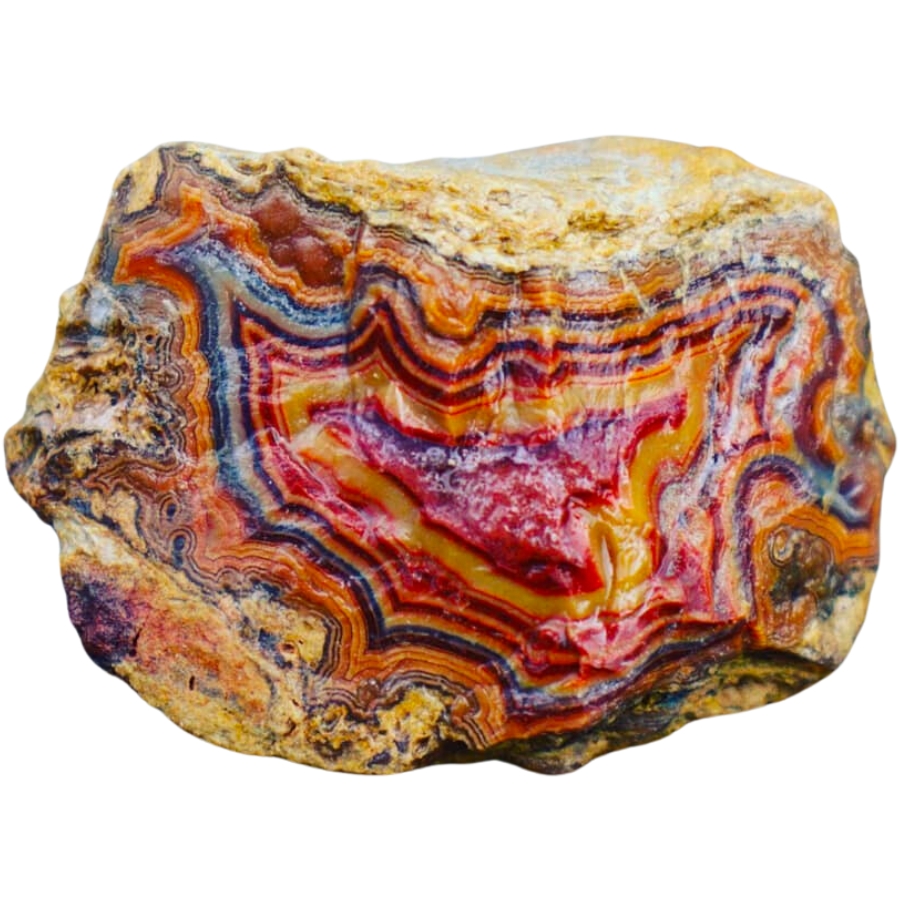
Known for its intricate patterns and bold colors, Fairburn agate is another fascinating type of agate. It usually has bands and swirls of different colors like red, yellow, orange, brown, and sometimes even pink or purple.
What’s special about these patterns is they often look like they’re in layers, creating a 3D effect. It’s like looking at a landscape made of stone.
It’s named after a place called Fairburn in South Dakota. This gives a clue about where it was first discovered.
People value Fairburn agate for the skill it takes to cut and polish it, which makes the patterns and colors really stand out.
Sagenite Agate
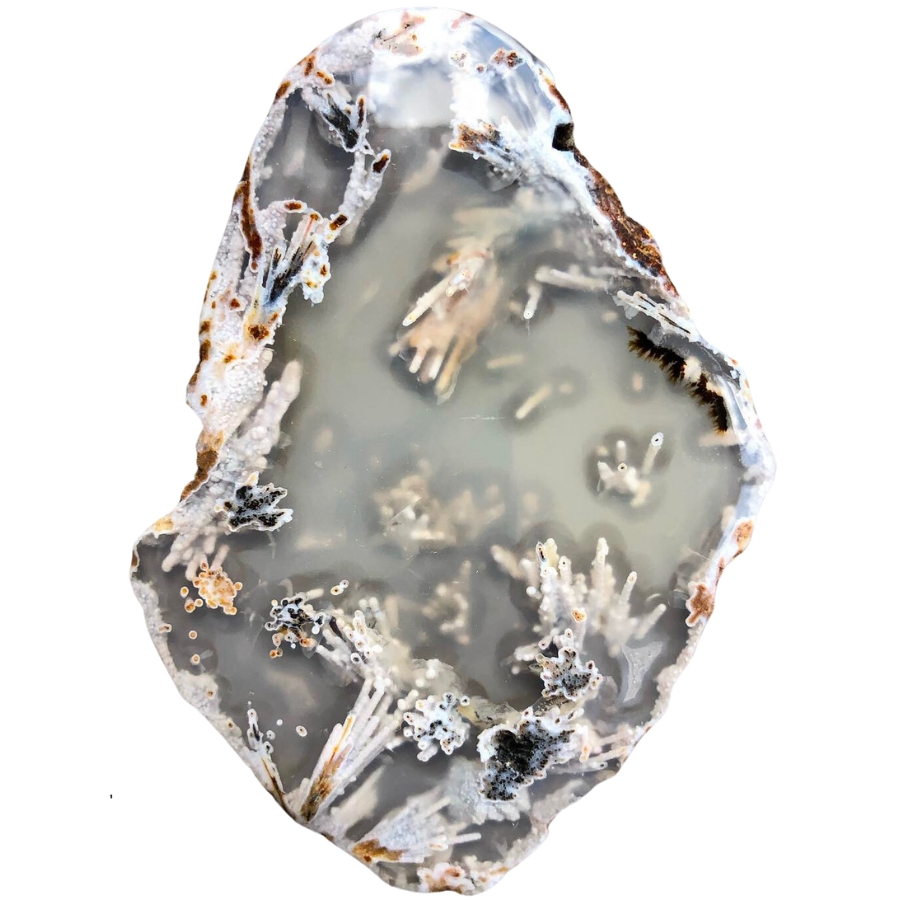
Sagenite agate has needle-like inclusions that look like tiny sprays of crystals inside it. They can be gold, silver, black, or even green, and they spread out in all directions, creating an amazing pattern.
The base of the agate is usually translucent, which lets you see these intricate needle patterns clearly.
These patterns are actually other minerals, like rutile or goethite, that get trapped inside the forming agate. These minerals grow in a crystal shape, looking like needles or hair.
Sagenite agate is often used in jewelry and other decorative items, with some people thinking that its needle patterns look like fireworks or starbursts.
Tree Agate

Tree agate, as its name suggests, looks like it’s got tiny trees or branches inside it. These tree-like patterns are usually green and spread out against a white or light gray background.
The green patterns aren’t actual trees, though. They’re made of minerals like chlorite or manganese.
Each piece of tree agate is different. You won’t find two that are exactly the same. It’s valued for its looks and it’s often used in jewelry and decorations.
The key factors in our recommendations are:
- The deep experience and understanding of our team about the area
- Recommendations from local groups and clubs
- How easy it is to get the a particular location
- Safety and potential hazards when collecting
- Weighing private and public locations
- The ability for both experienced and novice agate enthusiasts to find great samples
With these factors in mind we’ve been able to put together a fantastic list that just about anyone can use!
Kids. Beginners. Pros. Doesn’t matter. This book has become the go-to because it works for everyone.
Magy put it bluntly: “Identify rocks, crystals and minerals is so easy now!”
That’s not by accident, the photos are crisp, the callouts are simple, and the design is rugged enough to throw in a backpack without worrying. Whether it’s your first geode or your hundredth, this guide keeps the fun part simple: finding more treasures.
The Best Spots To Find Agates in Kansas
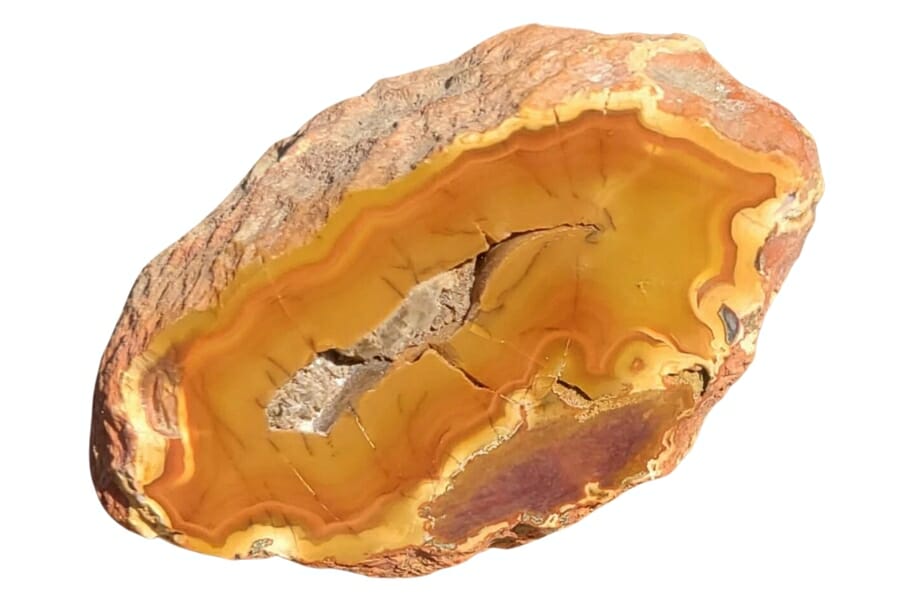
Here are our suggestions for places in the state where you can find agates. We also have a lot of interesting places to search for gems in Kansas, but not all of them are suitable for finding agates.
Always Confirm Access and Collection Rules!
Before heading out to any of the locations on our list you need to confirm access requirements and collection rules for both public and private locations directly with the location. We haven’t personally verified every location and the access requirements and collection rules often change without notice.
Many of the locations we mention will not allow collecting but are still great places for those who love to find beautiful rocks and minerals in the wild without keeping them. We also can’t guarantee you will find anything in these locations since they are constantly changing.
Always get updated information directly from the source ahead of time to ensure responsible rockhounding. If you want even more current options it’s always a good idea to contact local rock and mineral clubs and groups
Big Blue River
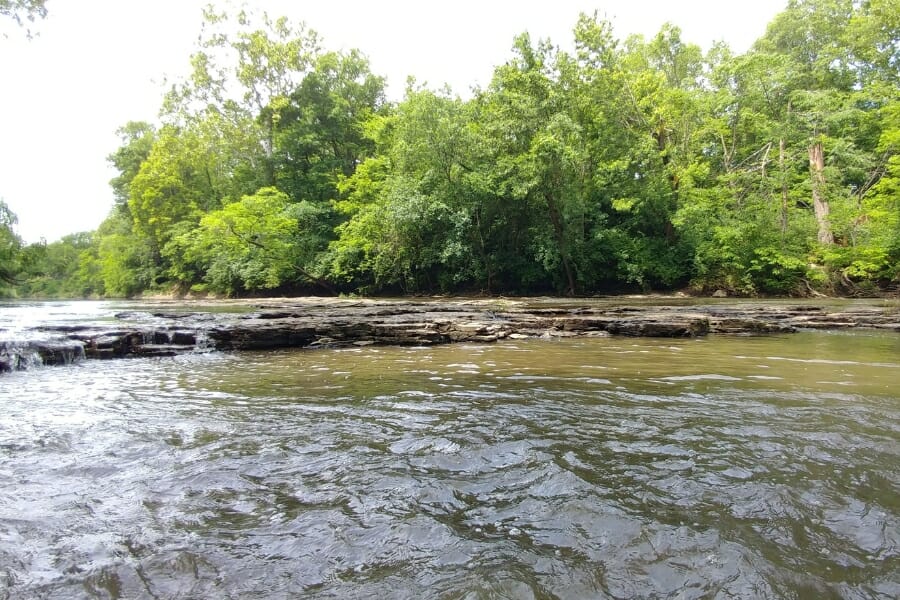
The Big Blue River is a branch of the Kansas River that runs through the northeastern part of Kansas for about 359 miles. The river starts in Nebraska and flows through Kansas, changing the landscape and adding nutrients to the soil.
Over time, the river has eroded and exposed many different rocks and minerals, making it a possible treasure trove for people looking for rocks and gems.
Collectors like the area because they might find agates there and because the area around the river is peaceful and beautiful. The river is an excellent place for people interested in agates because of its long history, varied geology, and ability to reveal hidden gems.
Before bringing your agate finds back home from Kansas, ensure you know the most up-to-date rules about collecting there.
Where we found agates in the Big Blue River
You can find agates along the river’s shores and in the riverbeds. The constant movement of the Big Blue River’s water over thousands of years has naturally smoothed and shown off these beautiful stones.
Chikaskia River
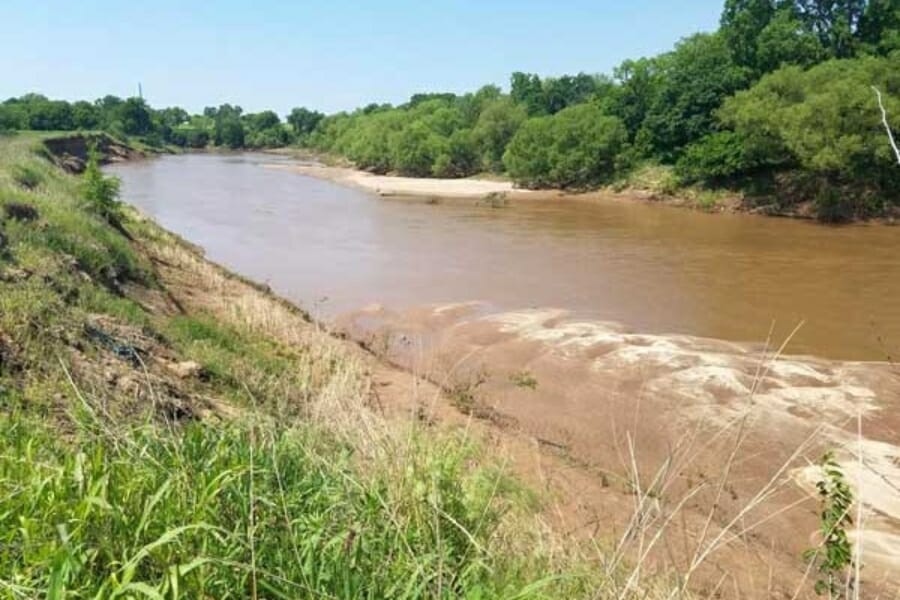
The Chikaskia River starts in Kansas and flows south into Oklahoma along a path about 159 miles long. As a unique waterway in Kansas, it has shaped the state’s landscape and played a big part in its geology and ecology.
Chalcedony occurs naturally in the area and often takes the form of agates. It can be found in pebbles, gravel, and other sedimentary deposits. The peaceful setting of the river, which is full of wildlife and interesting geological features, makes it more fun to look for these gems.
Where we found agates in the Chikaskia River
Often, the best places to begin are the exposed gravel bars in rivers. These areas contain a mixture of rocks and minerals transported by the river’s currents. These bars can yield new agate specimens after significant rainfall or when water levels are lower.
Republican River
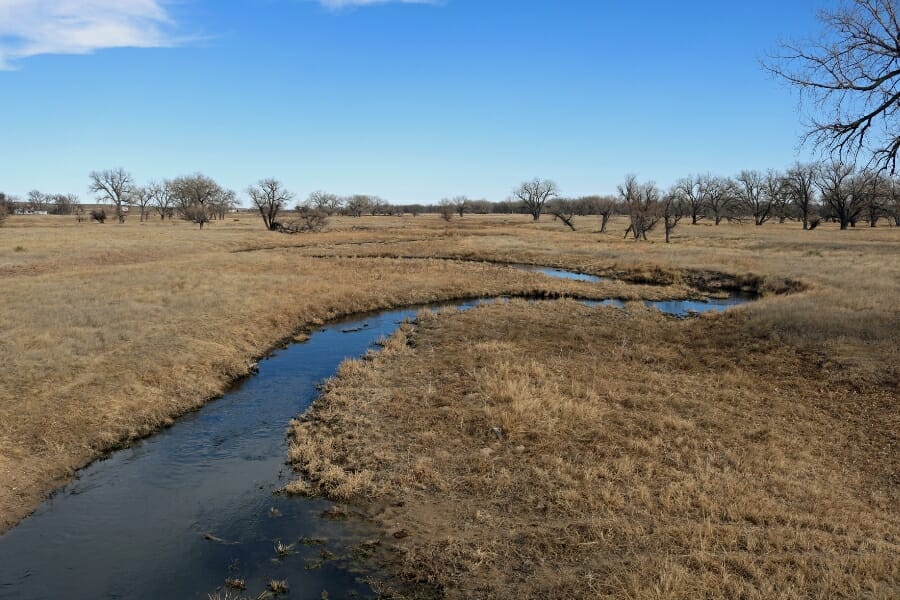
The Republican River is a significant waterway that starts in Nebraska and flows through northern Kansas. This river has had a big impact on the geology and ecology of the state. It has shaped the state’s landscape in many ways.
Over a long period, the river has acted as a natural sieve, eroding its banks and moving a wide range of rocks and minerals downstream. Agates are one of the geological treasures it shows. They often look like they have stripes on them.
The Republican River flows in a way that constantly changes the landscape, especially after it rains. The river attracts new and experienced collectors because of its long course and the chance of finding agates and other minerals.
Where we found agates in the Republican River
You can find these semi-precious stones in the river’s gravel bars, bends, and along its shores.
Saline River
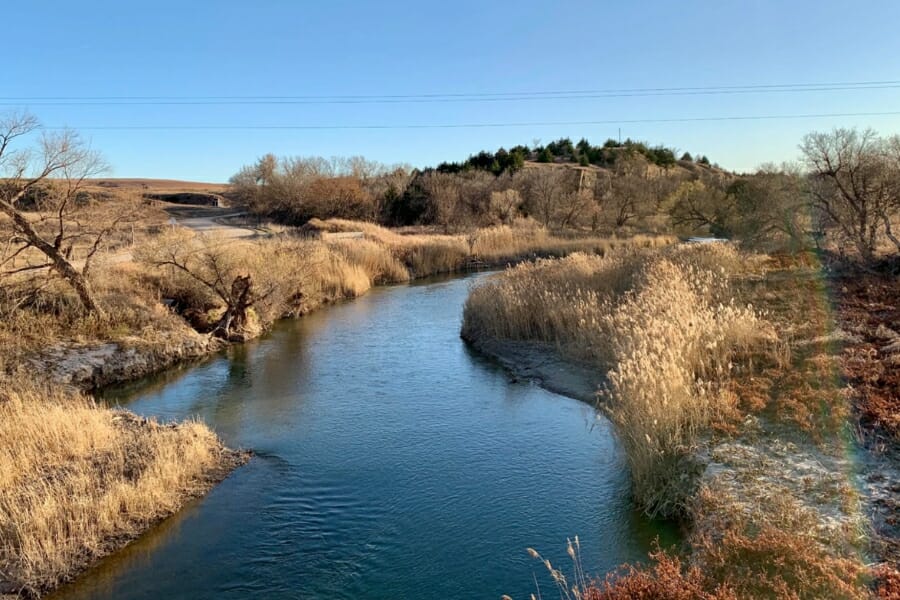
The Saline River runs through the middle of Kansas and is a key part of the state’s geological and hydrological story. With its long stretches of sparkling water, this river has been challenging at work for thousands of years, shaping the land and revealing mineral treasures that were once hidden.
When it rains, or the water level goes down, new sediment layers are exposed, making it easier to find agates. For people who like rocks, the Saline River is a great place to look for agates. Not only is it exciting to see new stones, but it also has a beautiful view of Kansas.
Both beginners and experts can go on a unique rock-hunting adventure along the river’s path, full of geological wonders and promises of agate treasures.
Where we found agates at the Saline River
Some of these gems are agates brought to the surface by the river’s constant erosion. These banded beauties can often be found in the shallows and bends of the Saline River, where there is a lot of gravel.
Smoky Hill River
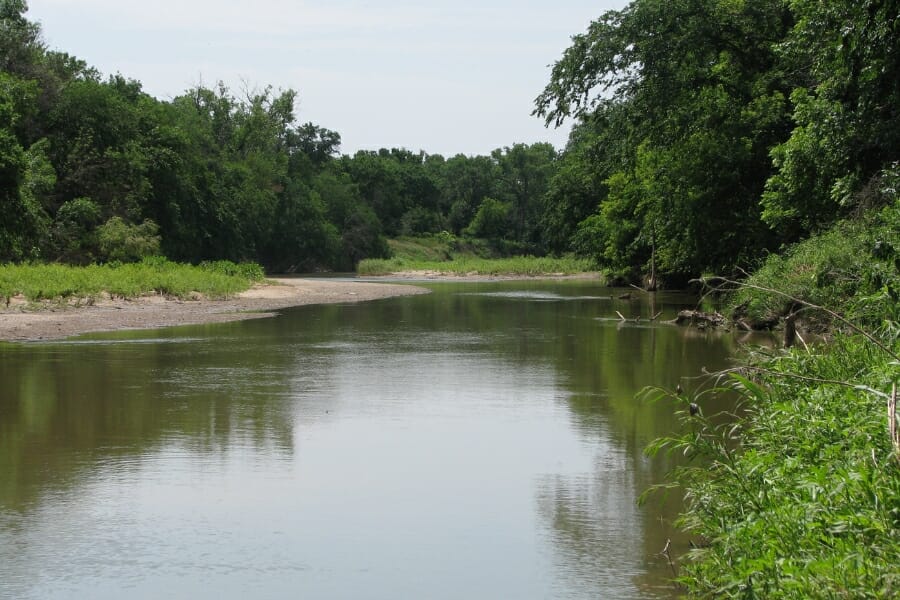
The Smoky Hill River flows through Kansas beautifully, showing off the state’s varied geology and green landscapes. Over time, the flow of this critical river has uncovered and shown off many geological treasures that were hidden beneath it.
As the seasons change and the water level rises and falls, the Smoky Hill River constantly changes the shape of its banks, exposing new layers of sediment. These changes make it easier for people with good eyes to find agates.
Aside from the minerals that might be found, the beautiful setting of the river adds to the excitement of rockhounding by combining the thrill of discovery with the peace of nature.
Where we found agates in the Smoky Hill River
With its bends, shallow spots, and gravelly banks, the river’s natural path is a great place to find these interesting stones with bands. The outer curves of river bends tend to experience more significant erosion. Faster-moving water can expose new rocks and minerals, making these locations potentially fruitful for agates.
Other Great Places To Find Agates in Kansas

After telling you where the best places are to look for agates in Kansas, we’ll tell you where else you can go hunting. We put them in order by county to help you.
Our recommendations by county
| County | Location |
| Barber | Aetna area draws and washes |
| Barber | Medicine Lodge |
| Clark | Bluff Creek |
| Clark/td> | Mount Casino |
| Cloud | Old River Bed |
| Jefferson | Glacial moraines and gravel drifts |
| Logan | Smoky Hill River |
| Shawnee | In glacial moraines near Topeka city |
| Sheridan | Saline River |
| Wilson | Verdigris River |
Additional areas you can find agates
We want you to be successful in your search since Kansas is a big state. Here are some more specific places where you can spot agate specimens.
Rivers and riverbanks
Rivers and their banks move many minerals, including agates, from one place to another. As water flows through landscapes, it wears away the land and brings up hidden gems from the ground. These gems are then carried downstream.
Over thousands of years, these waterways have acted as nature’s tumblers, smoothing and polishing rocks. This makes the bands on agates look more attractive. Especially when the water level is low, riverbanks show piles of sediment and gravel.
Streams and creeks
Streams and creeks are great places to look for agates because they move slowly and are connected to the land. Smaller rivers and streams often cut through different rock formations, exposing minerals like the sought-after agates.
As streams and creeks meander, they keep revealing new layers of the earth. This gives collectors a chance to look at new things. Erosion and water flow in these channels help to separate and concentrate the heavier minerals, making it easier for a sharp-eyed hunter to find agates.
Washes and ravines
Washes and ravines, natural paths shaped by water and time, are good places to look for agates. These geological formations are caused by regular water flows, often caused by rain or melting snow.
These water flows act as natural sieves, catching and concentrating mineral treasures. Gems like agates, which have distinct bands and are see-through, can be found in these channels. As water flows through and drains from an area, it wears away the land and often reveals mineral-rich layers that were previously hidden.
Common Agate-Hunting Questions
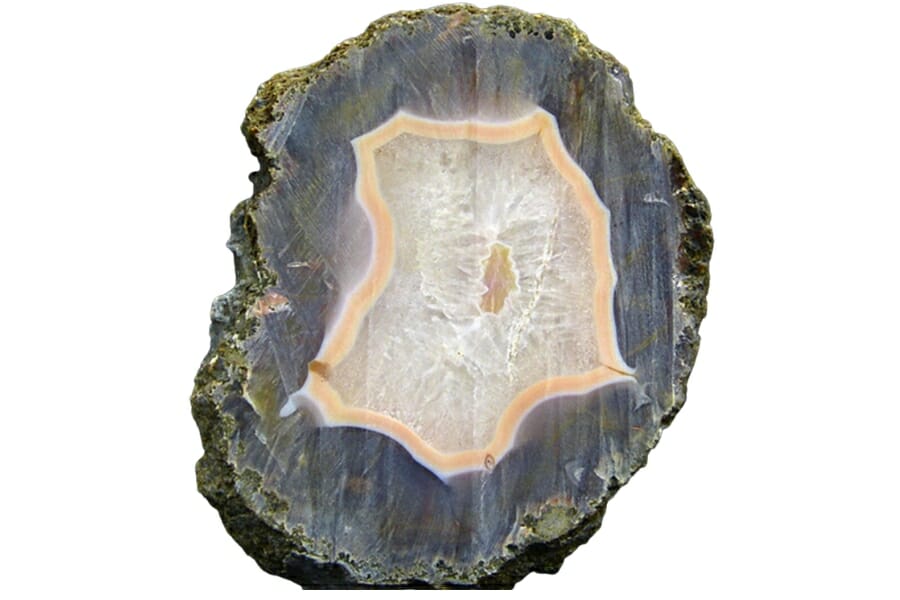
When people go to Kansas to look for agates, they often ask the questions below, and knowing the answers is important.
Is it illegal to collect agate in Kansas?
Kansas is a great place to look for agates if you know what you’re doing. In public places, it’s best to follow the rules. Get permission to go on private land before you start collecting specimens.
The Best Places To Buy Agates In Kansas

Not all people who hunt for agates like to spend all day outside looking for rocks. Sometimes, you only need a pretty agate to display or add to your collection. Here are some places in Kansas where you can buy agate crystals.
- Abundance Crystals – 1908 W 13th St N, Wichita, KS 67203
- Crescent Springs – 7327 W 80th St, Overland Park, KS 66204
- Down to Earth Co. – 1123 E Douglas Ave, Wichita, KS 67211
- Earthrocks LLC – 623 Coffeyville Ave, Independence, KS 67301
- Summit Step’s Minerals – 806 Massachusetts St, Lawrence, KS 66044
If you have any recommendations for our list please leave a comment below!

